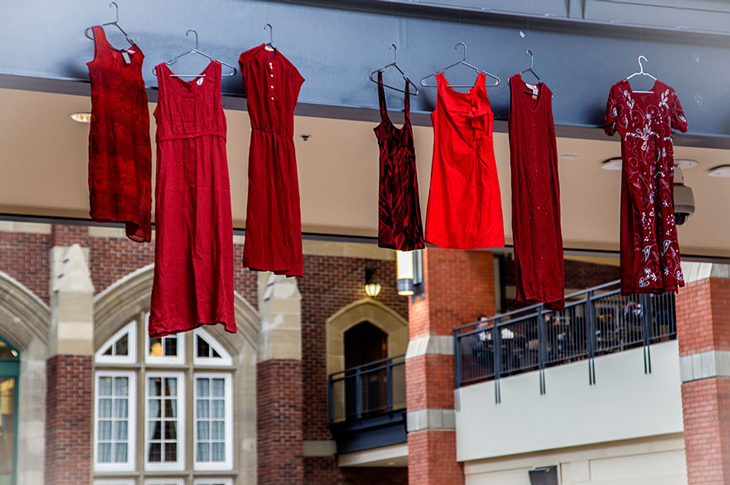REDress Project

Brittany Bearspaw was just 16 years old when she was found dead on the Trans-Canada Highway running through Morley, Alberta on Dec. 31, 2006. On the night she died, Brittany called her mom to ask permission to go to a dance the next day. The case is still open but investigators have no leads.
Métis artist Jaime Black created The REDress Project eight years ago as an "aesthetic response" to the more than 1,200 missing and murdered Indigenous women in Canada.
An installation of red dresses will be on display around SAIT campus Wednesday, Feb. 26 to Monday, March 9.
The dresses represent Indigenous women affected by violence — those who are gone, but not forgotten. Each empty red dress honours their memories and signifies our support for these women and their families.
Celebrating and remembering
International Women’s Day is Monday, March 9, and SAIT is holding its second annual Women in Trades and Technology conference to mark the occasion. This year will focus heavily on Indigenous experience:
- Waneek Horn-Miller, Canadian activist, Olympian and former Director of Community engagement for the National Inquiry into Missing and Murdered Indigenous Women and Girls will be the closing keynote speaker.
- Josie Nepinak, Executive Director of Awo Taan Healing Lodge Society, will talk about the significance of the REDress Campaign.
- Staci Duchene, Indigenous activist and artist, will present “Red Cloak” — an art piece containing some of the names of the missing and murdered indigenous women and girls.

Oki, Âba wathtech, Danit'ada, Tawnshi, Hello.
SAIT is located on the traditional territories of the Niitsitapi (Blackfoot) and the people of Treaty 7 which includes the Siksika, the Piikani, the Kainai, the Tsuut’ina and the Îyârhe Nakoda of Bearspaw, Chiniki and Goodstoney.
We are situated in an area the Blackfoot tribes traditionally called Moh’kinsstis, where the Bow River meets the Elbow River. We now call it the city of Calgary, which is also home to the Métis Nation of Alberta.